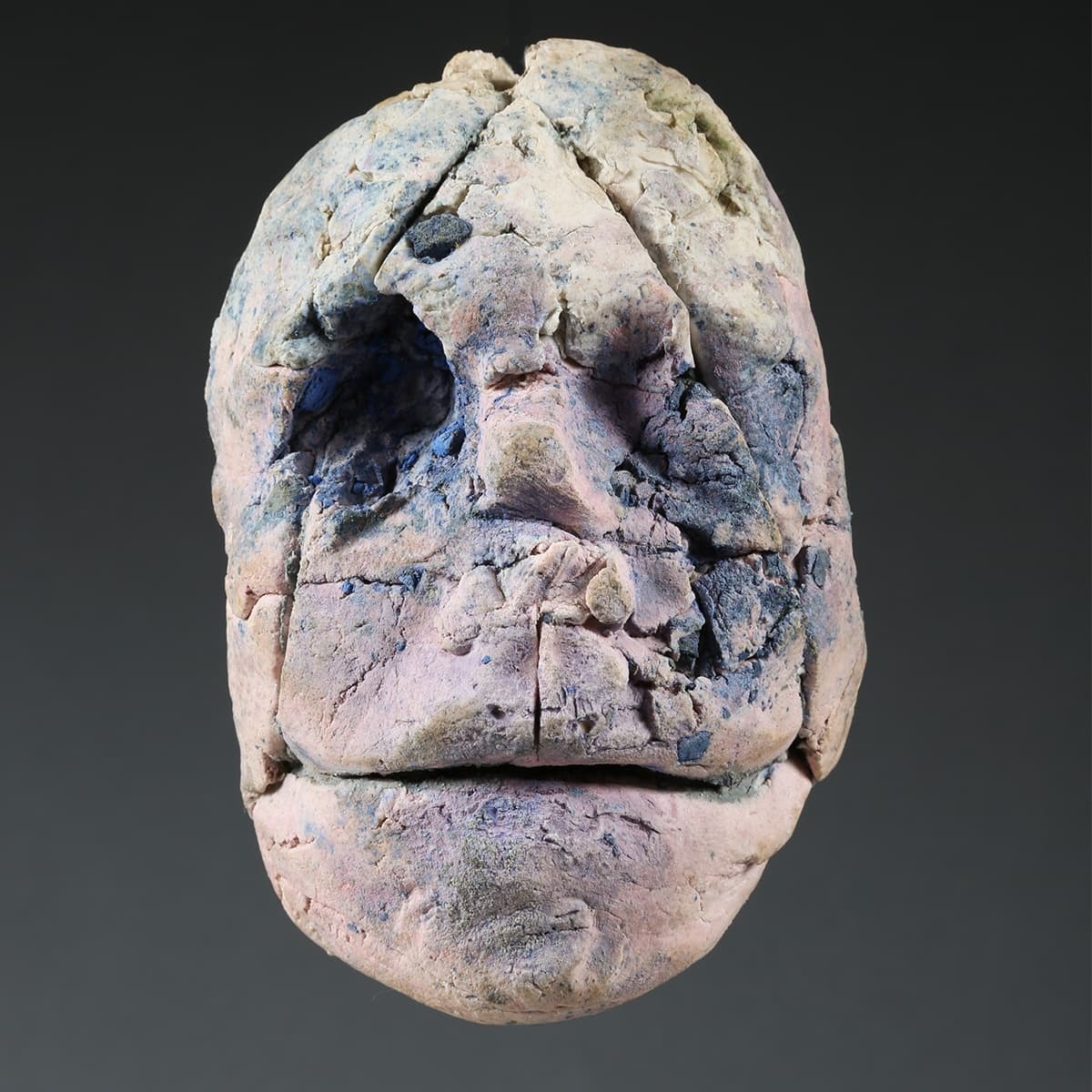Stephen De Staebler: Masks and Monumental Figures

"Clay can be a metaphor for many things. I made it a metaphor for flesh and earth.” - Stephen De Staebler
The Crocker Art Museum is delighted to announce Stephen De Staebler: Masks and Monumental Figures, an exhibition of clay and bronze masks and sculptures, on view from November 21, 2021, through April 3, 2022.
The exhibition will utilize both the Crocker’s gallery and outdoor courtyard spaces. A series of rugged, haunting masks, heads, and torsos that suggest mummification and mortality will be installed indoors on the Museum’s third floor, overlooking a mix of winged and totemic figures placed outside in the 7,000 square foot main courtyard. The collection of more than 70 works created by the artist over 45 years are examples of three-dimensional poetry speaking to the human condition.
“De Staebler’s art is one of high originality: he forged his own unconventional techniques, ‘no tools no rules’ was his mantra and he used anything including his body as an instrument for the sake of his art,” said Rachel Gotlieb, Ph.D., a leading ceramics specialist and the Crocker’s inaugural Ruth Rippon Curator of Ceramics. “His work is deeply connected to history, the materiality of clay, and above all the meaning of life.”
De Staebler was inspired by Greek, African, and Asian antiquity, tribal artworks, and Indigenous peoples of the Northwest. His work explores the use of masks in rituals and ceremonies, and the resulting pieces can be playful and transcendent, but also unnerving and chilling. Seven sculptures included in the exhibition, some of which are cast from unearthed clay body fragments that he had made earlier in his career and which he buried in what he called the ‘boneyard’, a landscape installation behind his studio.
“We are delighted to present this focused survey of work by Stephen De Staebler,” says Mort and Marcy Friedman Director and CEO, Lial A. Jones. “The indoor installation of over 60 masks will explore his fascination with the human face, while outdoors, his mysterious, totem-like bronzes allow us the rare opportunity to activate our open-air courtyard on behalf of an exhibition.” The Museum’s courtyard last featured an exhibition installation in 2016 for Ai Weiwei’s Circle of Animals/Zodiac Heads.
About the Artist
An internationally celebrated sculptor and a pivotal figure in the Bay Area Figurative and California Clay movements, De Staebler (1933–2011) created a body of powerful, symbolic sculptures in clay and bronze in a career that spanned five decades. His practice was known for merging ancient and modern vocabularies and capturing the physical and spiritual struggles of the human condition invoking religion, myth, geology, and archaeology.
At a young age, Stephen De Staebler was interested in the fundamental questions organized religion wrestles with: “Why are we here? Where are we going?” De Staebler earned a degree in religion at Princeton University and studied at the multidisciplinary Black Mountain College in Asheville, North Carolina with artist and activist Ben Shan, renowned for his anguished imagery of ordinary people.
De Staebler then moved to the Bay Area where he learned to crack and warp clay with pioneering ceramicist Peter Voulkos, who is credited with the leading ceramics revolution of the 1950s at the University of California, Berkeley. De Staebler earned his graduate degree in fine art in 1961, and subsequently began making masks based on molds of his own face with surfaces that suggest a cracked, blistered earth and the notion of “dust to dust.”
A catalogue (Dolby Chadwick Gallery/Estate of Stephen De Staebler, 2021) is available for purchase in the Crocker Museum Store. The exhibition will be on view through the National Council on Education for the Ceramic Arts conference, held in Sacramento from March 16 to 19, 2022.
ABOUT THE CROCKER
The Crocker brings people together and connects them in unexpected ways with art, ideas, each other and the world around them. Founded as a public/private partnership in 1885, the Crocker features the world’s foremost display of California art and is renowned for its holdings of master drawings and international ceramics, as well as European, Asian, African, and Oceanic art. The Crocker serves as the primary regional resource for the study and appreciation of fine art and offers a diverse spectrum of exhibitions, events, and programs to deepen visitors' understanding of art, including films, concerts, studio classes, lectures, and an array of activities for families and children. More information about exhibits and programs can be found at crockerart.org.